What always fascinated and inspired me about Johannesburg is the enormous creative potential of people to invent their everyday life. In the city, one sees street traders who invent market stalls and innovative business strategies, street cooks who invent special dishes, and a system of hand signals invented by customers to communicate with the local taxi drivers in order to get to the right destination.
Another invention is the Spaza shop that is unique to South Africa. These shops grew as a result of sprawling townships that made travel to formal shopping places more difficult or expensive. Spaza shops function as local convenience stores that initially were predominantly in the townships but nowadays are spread all over the country. There are about 100,000 Spaza shops in South Africa today (40,000 in Gauteng province alone, where Johannesburg is located) with a collective annual revenue of approximately US$1 billion. Spaza shops are typically family-run businesses that are part of the house, or are kiosks in front of a private home, and are constructed out of any material available.
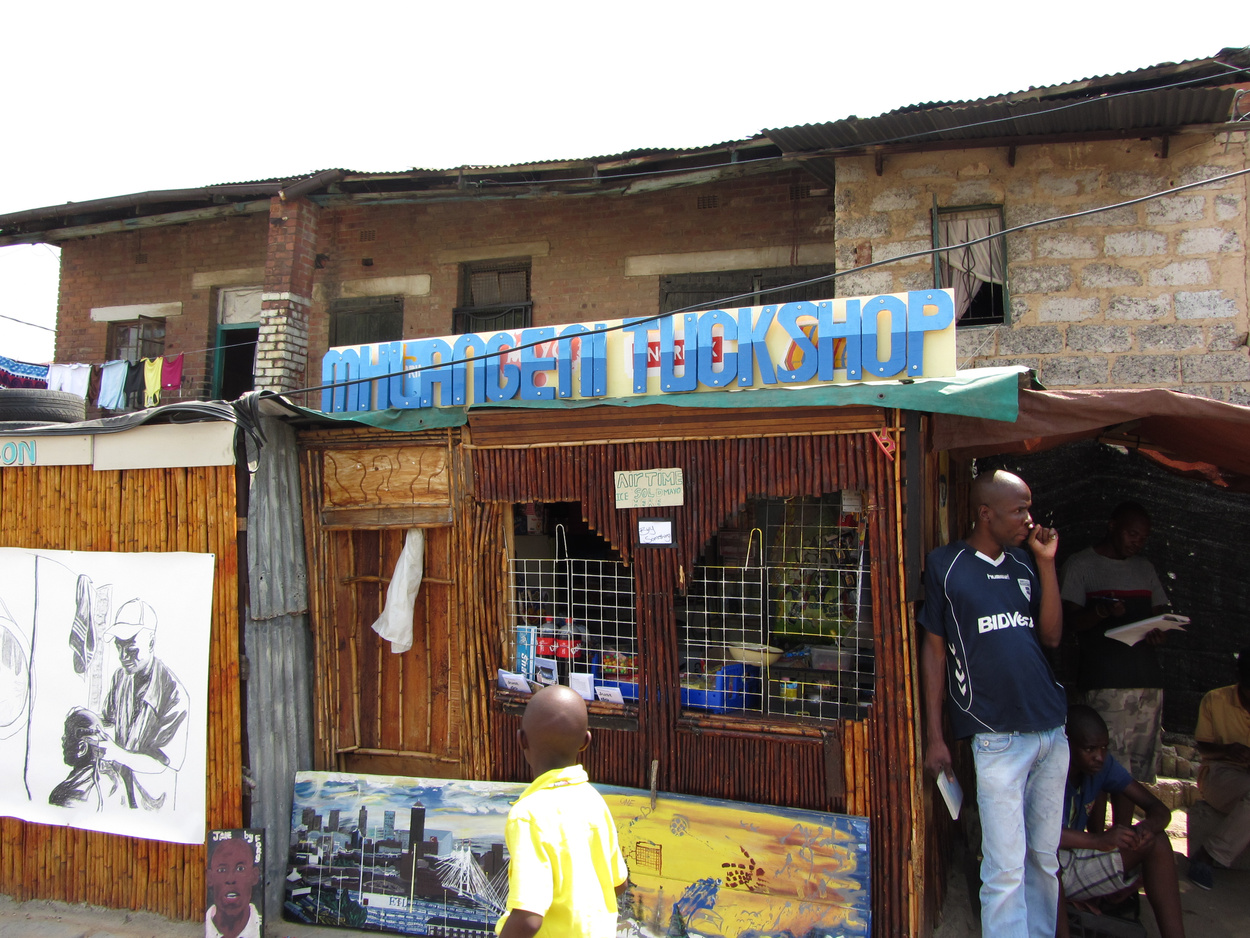
While Spazas are quite small, the owners often install a TV and DVD player in order to be able to watch films—as a result the shops function as an extension of the family's living room. Spazas are not simply suppliers of goods, but take on the role of social spaces where the family gathers during working hours (often 24/7) and friends and neighbors stop by to have a chat and a cigarette. A Spaza shop generally functions as the local dealer. According to Spaza News, an online publication providing information and educational resources for Spaza owners, the five most important products traded by Spazas are soft drinks, cigarettes, paraffin/candles, maize meal, and alcoholic beverages. 77% of Spaza shop owners go directly to wholesalers to buy their stock:1
There is a growing awareness of the importance of the Spaza retailer as a marketing channel among manufacturers and producers. More than one fifth of Spazas confirmed that products such as soft drinks and dairy and bakery products are delivered to their shops. Coca-Cola and SABMiller (South African Brewery) are some of the very few companies doing deliveries to Spaza shops. Spaza shops sell airtime for local telephone companies and sometimes function as small telephone booths—with sponsored phones.2
One of the main problems experienced by Spaza owners is increased competition with too many shops operating in too small an area. Limited financing is also a problem and only 3.8% of Spaza shop owners have received bank loans to start their business. Another threat Spaza shops are facing presently are the shopping malls that are being built in the townships. Supermarket chains offer cheaper products and therefore present a huge competition to the Spazas. More and more Spaza shops are closing down which not only means a lack of income for many families, but further a loss of community gathering spaces and the disappearance of a culture particular to South African townships.

The idea for the exhibition Just do it! is to bring a focus to local small scale businesses in Johannesburg and the challenges as well as creative potential that exist for them within the global economy. My interest in Spaza shops stems from my fascination with the ingenuity that one sees in all aspects of daily life in Johannesburg, and a desire to further investigate how creativity informs the operations of these stores. Spaza shops themselves are small artworks and it is the personal stories of the people running these businesses, as well as their efforts, that I believe deserve to be showcased.
In our globalized economy it is easy to take the individual in the complex network of trade, goods, and labor for granted. What does it actually mean to be a Spaza shop owner? Where do the goods come from? How do shop owners deal with competition? How many people need to survive off the small income generated? What are the social and economic networks in the local as well as in the global arena? And what can we learn from them?

With these questions in mind, the exhibition will be designed in the township of Alexandra (Alex) in close participation with Spaza shop owners and users. Working in Alex is challenging, delicate, and I believe necessary at the same time. The township is located in the north of Johannesburg right next to the city's financial district—Sandton—one of the most upper class neighborhoods and the country's connection to the global economy. People from Alex commute to Sandton to work as waiters, cleaning ladies, or other service-related jobs. Alex is a semi-formal township and it is very unlikely that the normal Jo-burger would visit the township.
Breaking the boundaries between these two neighborhoods and their inhabitants while expanding those of formal exhibition spaces like galleries and museums, the exhibition will happen within the parameters of Spaza shops in Alex. Visitors to Just do it! will be asked to interact with the reality of the space and the site-specific artworks on view. Unlike the re-produced reality of a gallery space, the visitor will have to engage with the Spaza's inhabitants including the shop owners, family members, and customers.
Just do it! will exhibit artworks that respond to phenomena of local small opportunities that come with informal entrepreneurship. The works will reflect on local businesses and their strategies of survival within the context of the global economy. In order to bring attention to Spaza shops and the community they serve, the exhibition will be site-specific and the participating artists, Sipho Charles Gwala, Keabetswe Mokwena in collaboration with graphic designer Reatile Mokwena, Claire Rousell, and Buhlebezwe Siwani will produce work along the theme in direct interaction with the participants on site. These emerging South African artists will work together for one month prior to the exhibition's opening engaging with the people from the community.
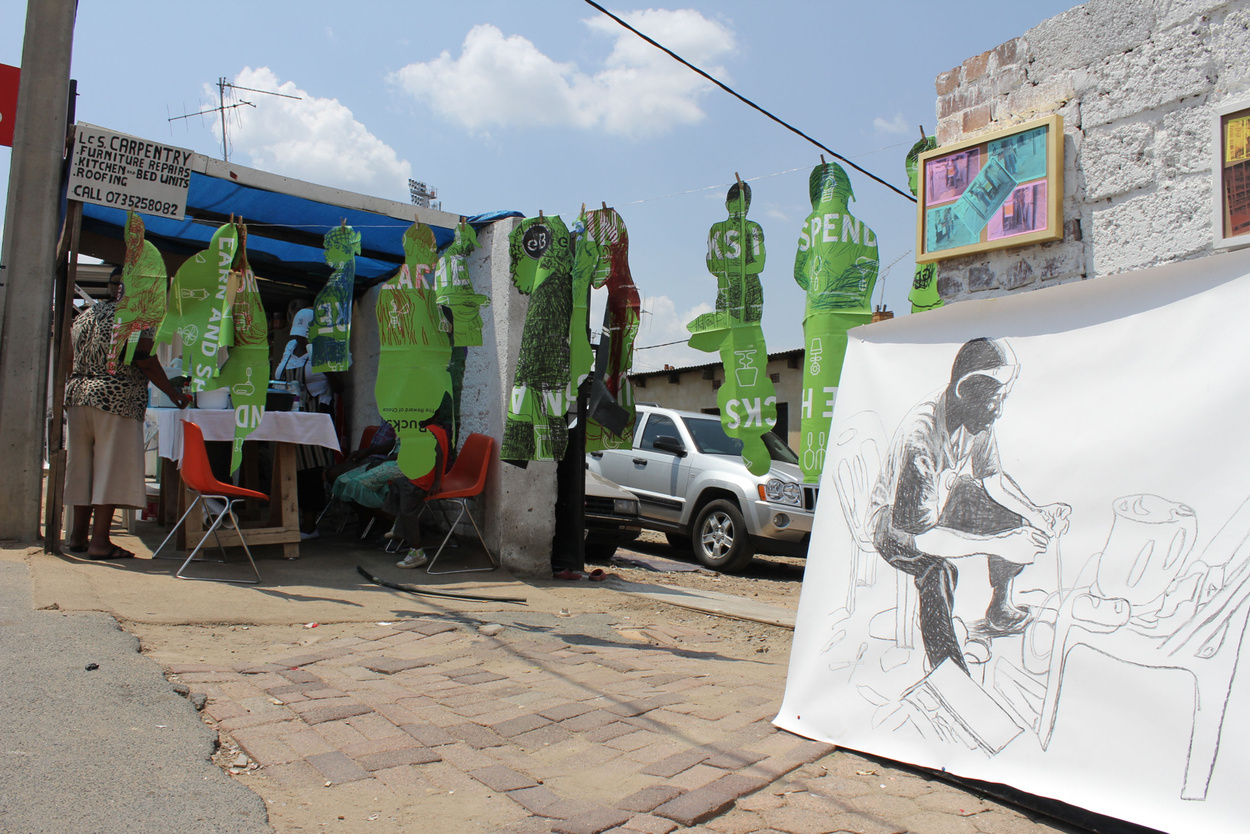
The Alex-born artist Sipho Charles Gwala is running a small Spaza shop in Alex himself. Mainly selling popcorn, his shop has grown over the years. For the exhibition, Sipho Charles Gwala is producing the work The Hustle, a series of large-scale drawings reflecting daily activities of Spaza shop owners in order to run their businesses.
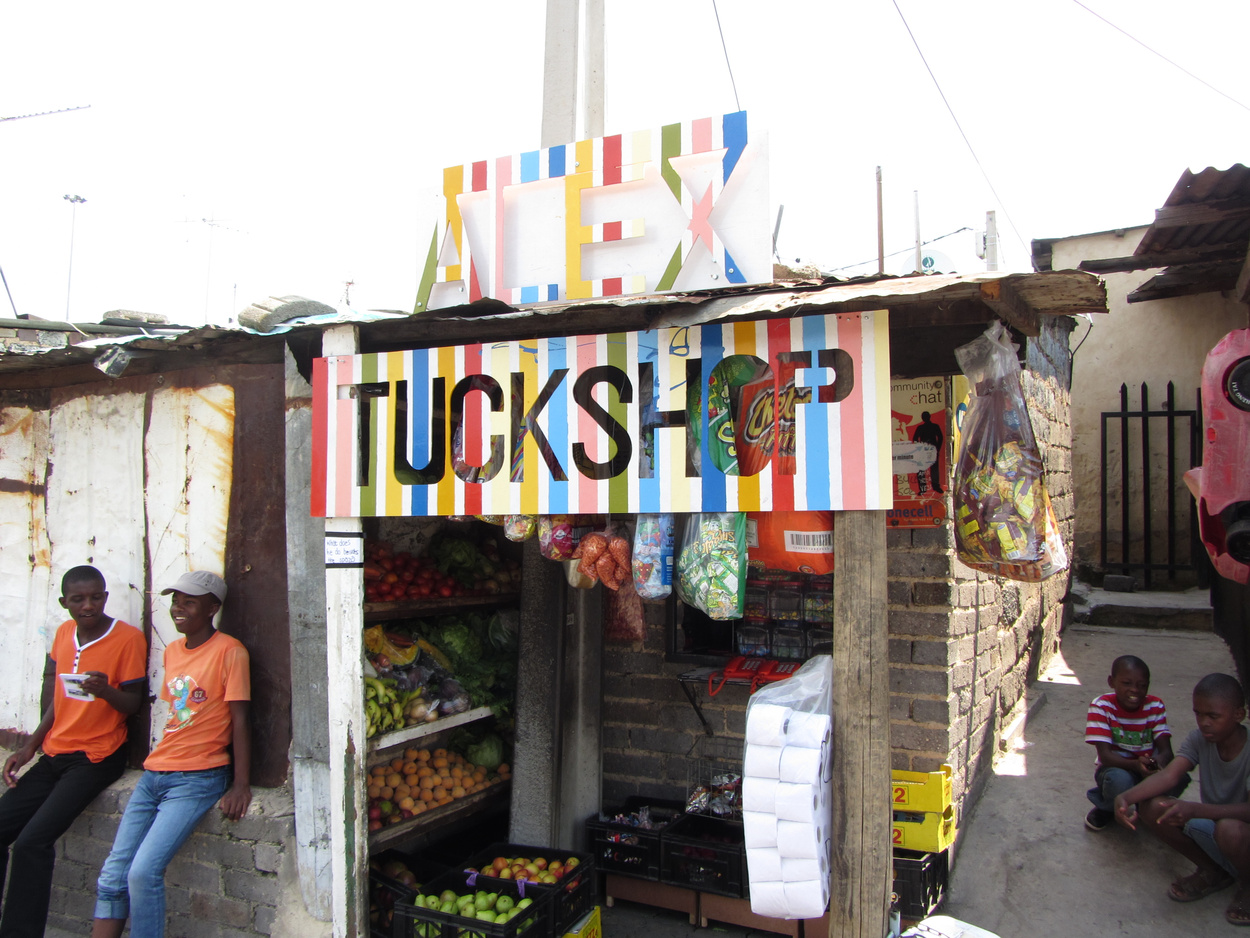
The Mokwena sisters, also born in Alex, are interested in the branding of supermarket chains globally and, in relation to this, the representation of the Spaza shops and their products. Spaza shops' marketing tactics rely on word of mouth in order to generate business. With their project Branding 13th Av. the two sisters intend to develop a branding strategy collaboratively with the shop owners, one that stays personal and at the same time fits into the aesthetics employed by global businesses.
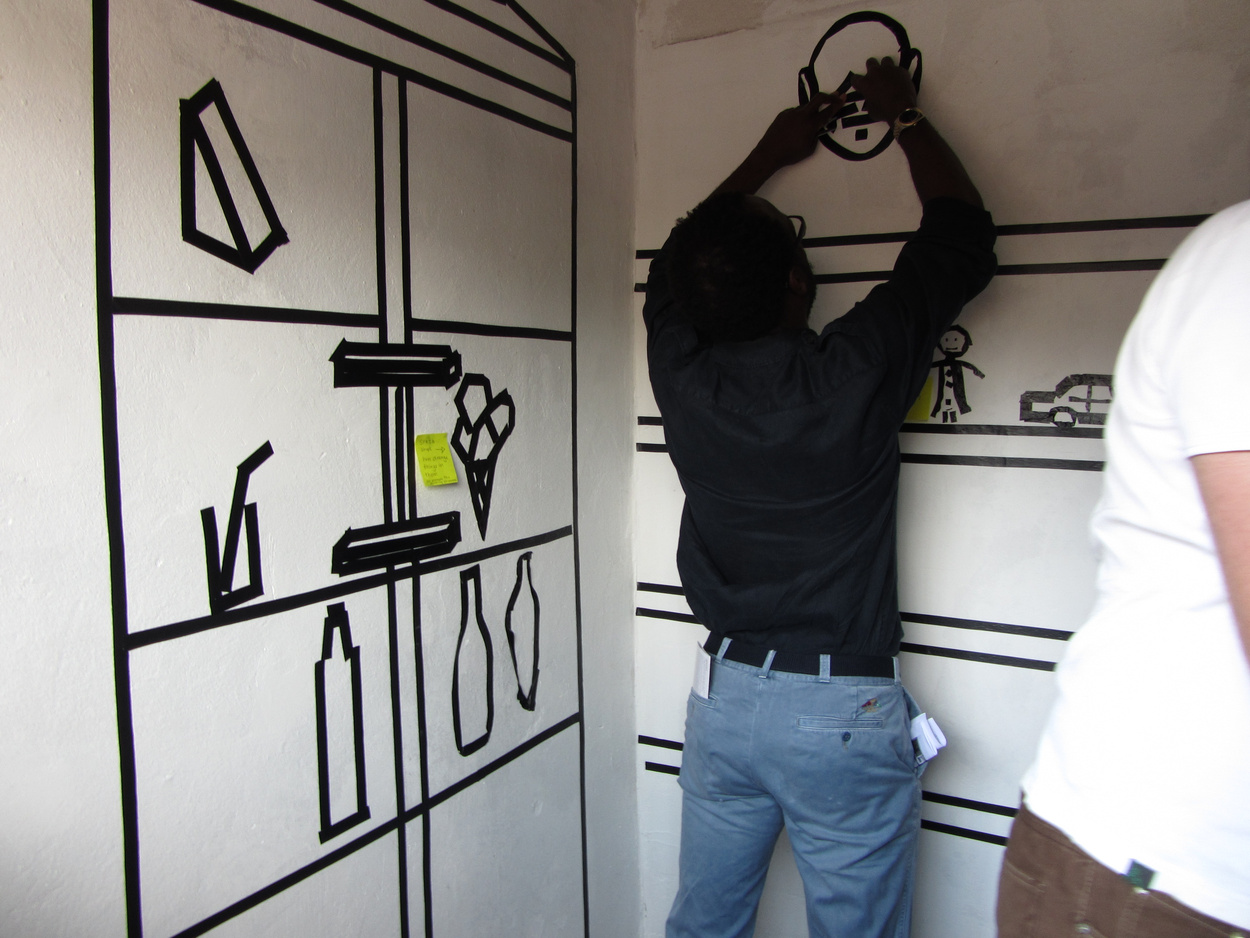
The artist Buhlebezwe Siwani and her project The promise of something better led to something hostile focuses on the Spaza shop as a social space and its slow disappearance due to the proliferation of commercialized shops cropping up in close proximity. The project explores the relationship between supermarkets, the Spaza shop, and the community. This exploration happens through the visitor interacting with Spaza shop owners in order to get to the conclusion of the project, which is a sound installation compiling the different sounds found in the supermarkets and Spaza shops.
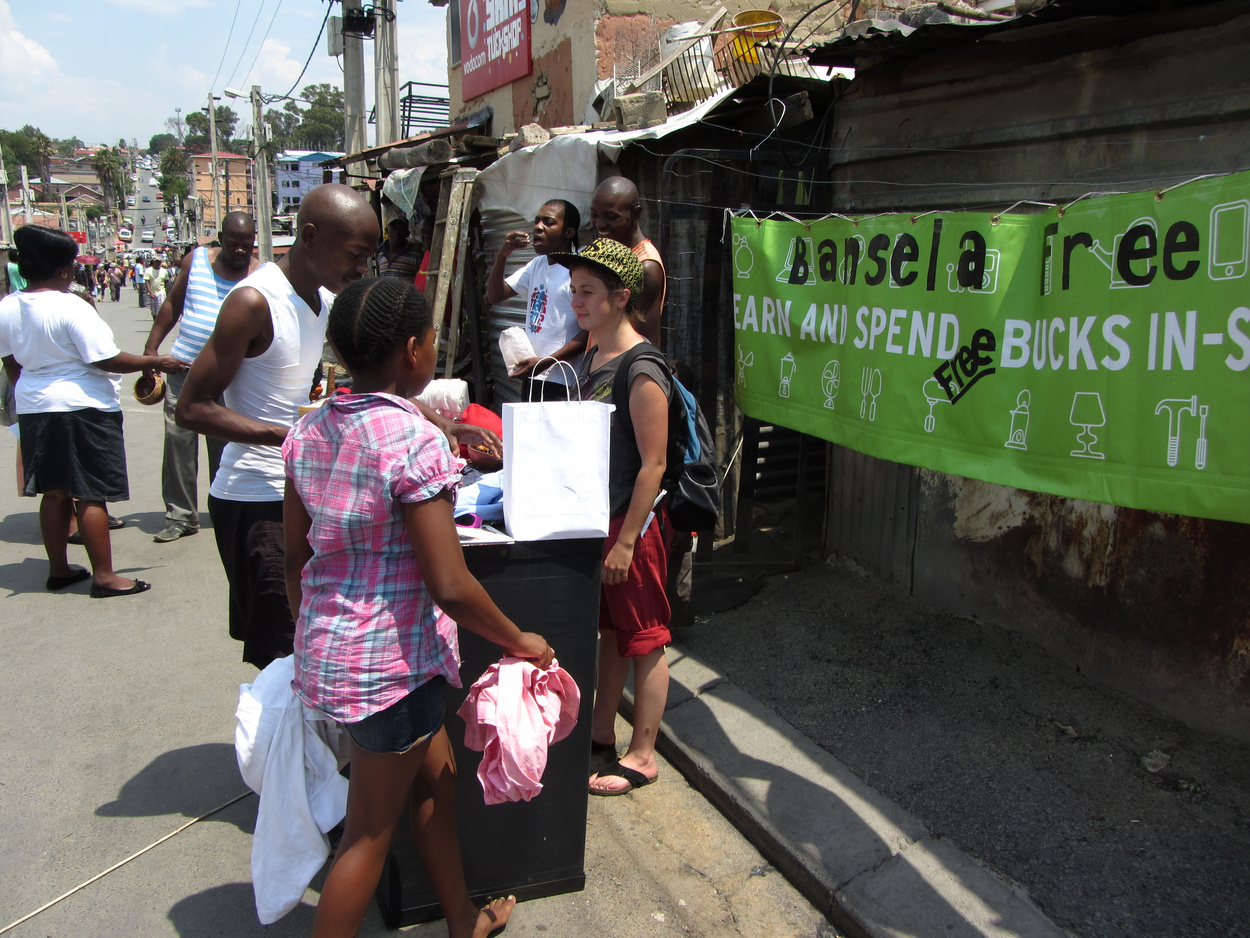
Claire Rousell will set up Bansela Free Shop(s) in collaboration with Spaza shop owners. The idea of the Bansela Free Shop is to exchange goods for free and the artist endeavors to extend the exchange of goods to more imaginative items such as a hand-written poem or a flower.
It is important for me that this exhibition is not simply artists showing their work and, in fact, I believe that this project has to inhabit the idea of trying to make a difference to the community in the way that Spazas do. I have often been asked what difference my work will make for communities and what the sustainable effects are. All my projects attempt to expose both the challenges and the potentials that exist in culture, economy, politics, society, and space in an artistic manner, and to use them as a starting point to initiate specific discourses and sustainable visions.
I believe the exhibition will not be determined by an end product or point, but rather I understand it as a collaborative process that will continue after the opening. I hope that over the course of Just do it! more people will become interested and involved and that further sustainable opportunities will develop out of it. I hope that the opening event will be as vibrant as the community and life in Alexandra itself, and that the visitor will be able to meander around the street and engage with the participating shop owners, artists, and broader community, having some local food and drinks.
I wonder how the exhibition will come together and am resistant to give a prognosis about what the final outcomes of the show will be. Much like Spazas themselves, I must remain flexible and adaptable, and be willing to embrace the things that cannot be foreseen.
Since 2005 I have been living and working on and off in Johannesburg. I arrived here for the first time by serendipity. I had been invited to be a guest lecturer by an architect and lecturer of the University of the Witwatersrand in Johannesburg who had seen my Masters' project on slum dwellings in Caracas in Venezuela where I had lived for two years. I fell in love with Johannesburg and the people and from then on I have been going back in different contexts, such as a visiting artist at the local artist studio The Bag Factory and later started to develop my own projects that I realized with different sources of funding. In 2010 I was invited as an artist to participate in the Dutch run international arts project Cascoland Mafikeng 2010 as part of the World Cup.
Johannesburg—and South Africa in general—for me is a very inspiring yet controversial space. The long history of segregation has clearly left its marks and still exists today. Maybe because I am an outsider I get the chance to dive into the different cultural groups that exist in the country and maybe that is a privilege that I have.
Katharina Rohde
Open Call Exhibition
© apexart 2012
1. Spaza News. Noel Ndhlovu and Sylise Petersen. 2011. http://www.spazanews.co.za/
2. Ibid.

